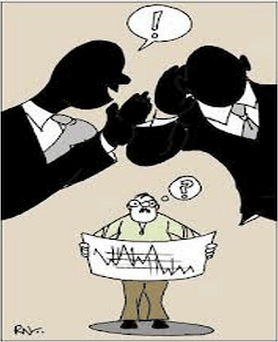 Insider trading is a term thrown around with illegal connotations attached to it. And if anything, famous criminal cases have just served to reinforce that view. However, contrary to popular view, the term "insider trading" actually encompasses both legal and illegal conducts. The SEC has adopted insider trading rules and amendments that aim to set the boundaries between what’s legal and illegal. Here are some rules that further defined the law regarding the issue of non-public information use: Fair Disclosure This rule addresses the issue of selective disclosure, which gives unfair advantage to people whom the nonpublic information was disclosed to. The rule stipulated that whenever a person acting in a company’s behalf discloses nonpublic information to enumerated people who may well trade based on the information they received, the information have to be made available to the general public as well. If the disclosure is done intentionally, a public disclosure has to be done simultaneously. However, if the disclosure is done unintentionally, a public disclosure has to be done as soon as possible. This rule came about to ensure that there is no exclusive distribution of information. In the past, it is customary for companies to release important information in conferences and meetings with people who may trade on the information in attendance. In addition, this rule also addresses the issue of unintentional disclosure; in which case, the company is compelled by law to disclose everything to the public to even the playing field for all traders. Rule 10b5-1 This insider trading rule defines the liability of a person who has nonpublic information and the circumstance of his trade in connection to that information. Thus, the rule holds a person liable for insider trading when he sells or purchases securities based on his knowledge of nonpublic information. However, the rule also sets forth that when the knowledge of nonpublic information has clearly not tainted the person’s trade decisions, his trade is still within the legal boundary of the law. Thus, if an individual was able to show that his trading decision was pursuant of a pre-existing contract, instruction or plan, the person is not liable for insider trading. This rule has become controversial lately because of the steady drumbeat of cases that issues defenses pertaining to this rule. One such case is involving Big Lots retailer and its CEO, Steven Fishman. Just a month before the retailer announced a negative first quarter earnings that lead to 25% nosedive of its stocks, Mr. Fishman sold about $14 million worth of stocks. Interestingly, adding more frenzy to this case is the fact that he announced his retirement plan last December. No wonder, the SEC is sniffing something fishy in the transaction. Naturally, several questions have cropped up whether executives have used Rule 10b5-1 as a loophole to an otherwise clear use of inside information to their advantage. While that may serve as a valid concern, it is important to note that the SEC was certainly not deterred in pursuing an investigation and a case on executives with a Rule 10b5-1 plan. The onus is still on the executive to prove that the plan was set in place before he possessed insider knowledge and that it was not modified and followed to a tee. Rule 10b5-2 This rule holds liable anyone who receives confidential information and trades based on that nonpublic information. Family member, friends, or acquaintances of key insiders who receives information owe a duty of confidence or trust and should they breach that trust, they could be liable for misappropriation of information. One famous case that upheld this rule was the United States vs. O’Hagan. O’Hagan was a partner for a law firm that represents Grand Metropolitan – a company that considers an offer for Pillsbury Company. O’Hagan used this nonpublic information to place a call option, which resulted to a $4 million profit. While O’Hagan argued that he has no fiduciary obligation to Pillsbury and therefore, not guilty of insider trading; the court ruled that what he did is considered a breach of trust; and misappropriation of such information constitutes a violation of insider trading Rule 10b5-2. Thus, the excuse of having no direct confidential relationship with the source of information is no longer valid since the rule extends to people who are generally not considered an "insider". Insider trading rules have sought to establish legal grounds on an otherwise fine line that separates what’s legal and illegal. For example, while fiduciary relationship is more concrete, the term "relationship of confidence and trust" can be very vague. Over the years, in its bid to expand its definition as needed, it could range from the most basic understanding of the term to a more obscure and even non-existent relationship. While that may be the case, understanding the gist of insider trading rules that separates what’s legal and not—preventing the use of nonpublic information that gives a trader any unfair advantage over the public—would put any anyone on the right side of the law, if he so desires.
|

|
|
|
|